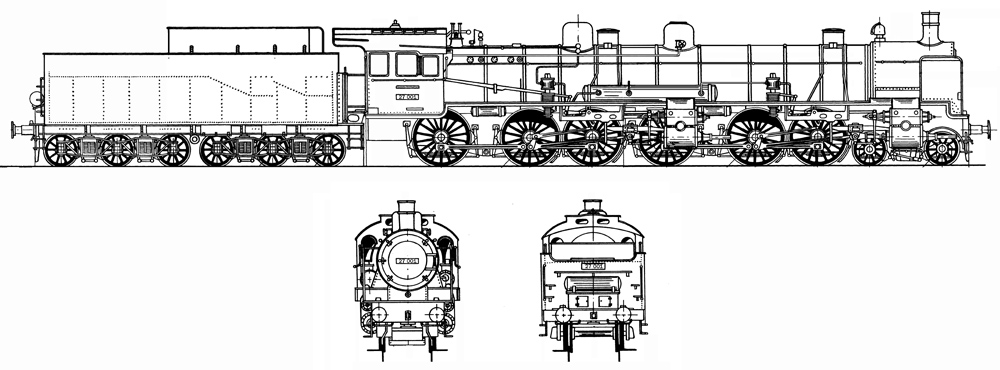



Country
Year
Class
Superheated steam 4 cylinder compound
4-6-6-0

Garbe, the Deus ex Machina of the Prussian Railways design office, would not have had much sympathy for the Raeudl, but even he sometimes let himself go to Pindaric flights of considerable magnitude.
This locomotive is the result of one of those rare moments of "creative vein" that the father of the P8, S10, G8, G10 and many other famous and less famous Prussian locomotives allowed himself.
It was 1910 and the various companies of the Second Reich were churning out locomotives like cookies. Garbe was tired. Developing the P8 had not been easy and he had had to give in to a lot of pressure from the various companies who each insisted on building the machines in their own way. The Normalia (the design sheets that the different companies had to follow) had been modified dozens of times. And anyway, those gentlemen at the Movement Office were still not happy. "How" said Garbe "I make them a locomotive that will last 100 years and they, those ******, they ask me for more power, even more.... Bah!" and poured himself a korn.
Evidently the korn had to be a lot so after a couple of days in which he remained closed in his office, he came up with the project of this machine, the P16. Of course, as usual, he had used many parts of the P8 and he was absolutely convinced of its good design.
For the first time he wanted to test some innovations that his French colleague Mallet was experimenting with the Americans. The prototype was erected and built at Hanomag and immediately passed to the Grünwald design office for testing.
The technicians in Grünwald were astonished. The locomotive ran very well when the two stokers were able to feed the powerful furnace with sufficient pressure.
Negotiations were already underway to build the machine in series. A first contract for 40 units to be entrusted to RBD Katowice for the towing of commuter trains to the mines was being defined. Unfortunately, the Kaiser did not think so. He needed cannons for the next war and blocked the project. The Br 27 001 remained unfortunately a unique specimen and was used in Silesia on non-electrified lines until the armistice when it was interned by the Allied forces and transferred to the USA, disassembled in every detail and studied in detail. It is my personal opinion that many of the American "Super Power" locomotives derive their design from this machine.
The drawing represents it in what would have been the DRG numbering starting from 1926: Br 27 001 - P 68.18
